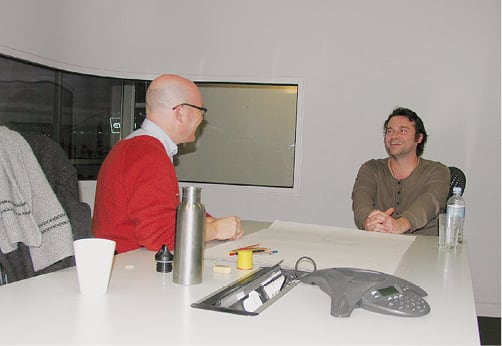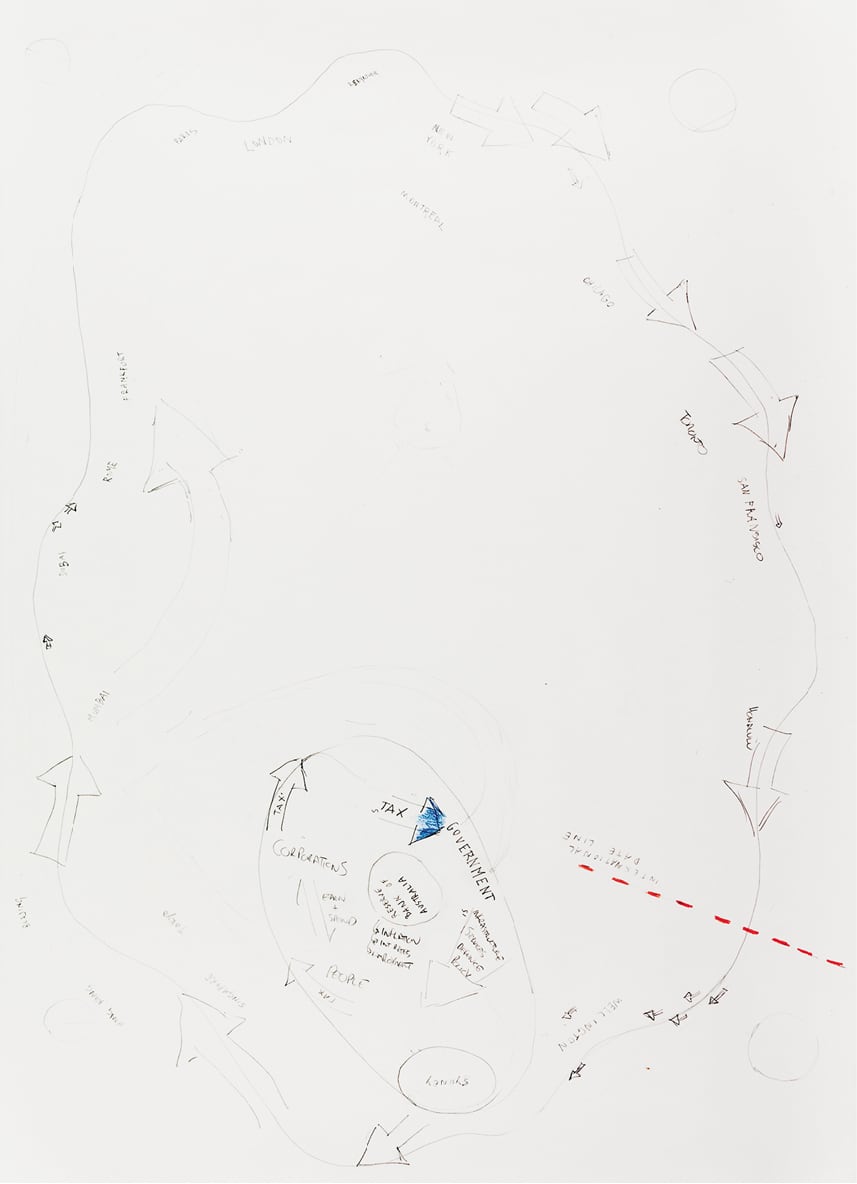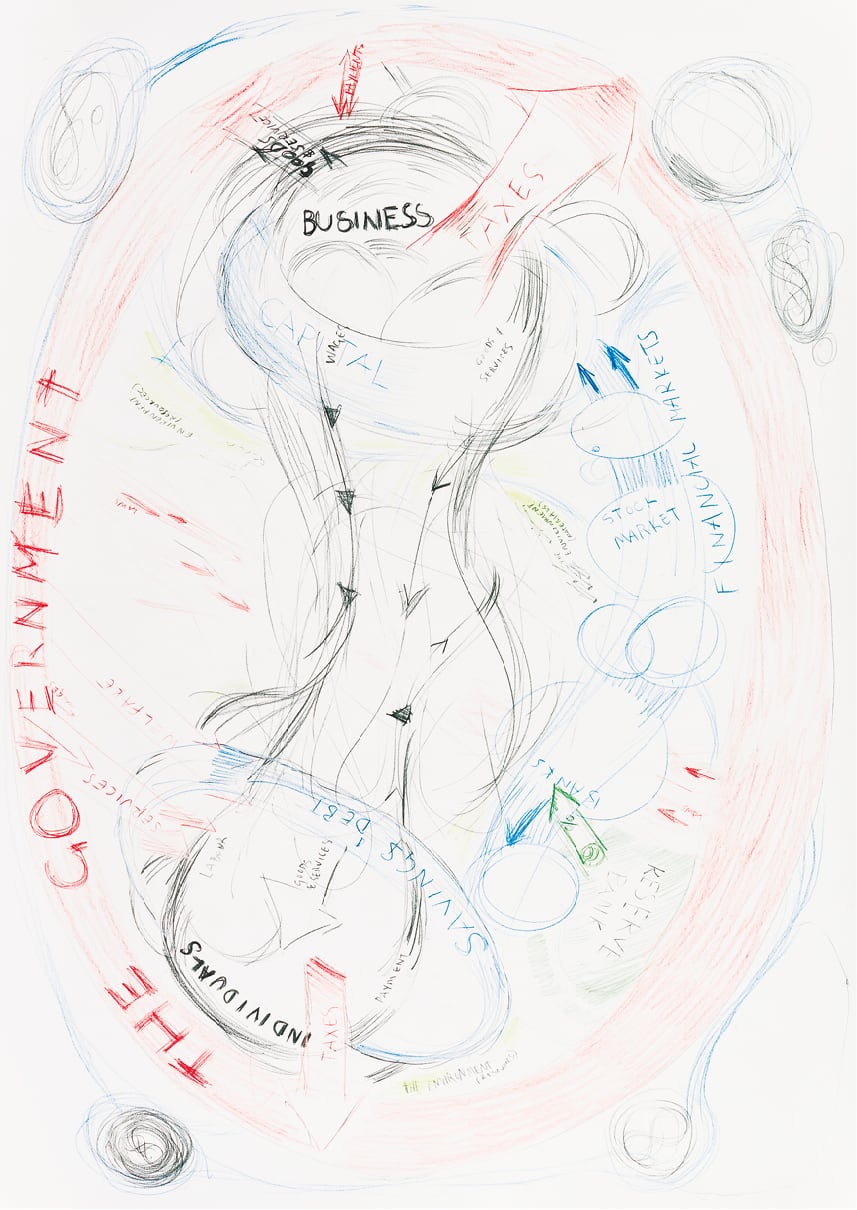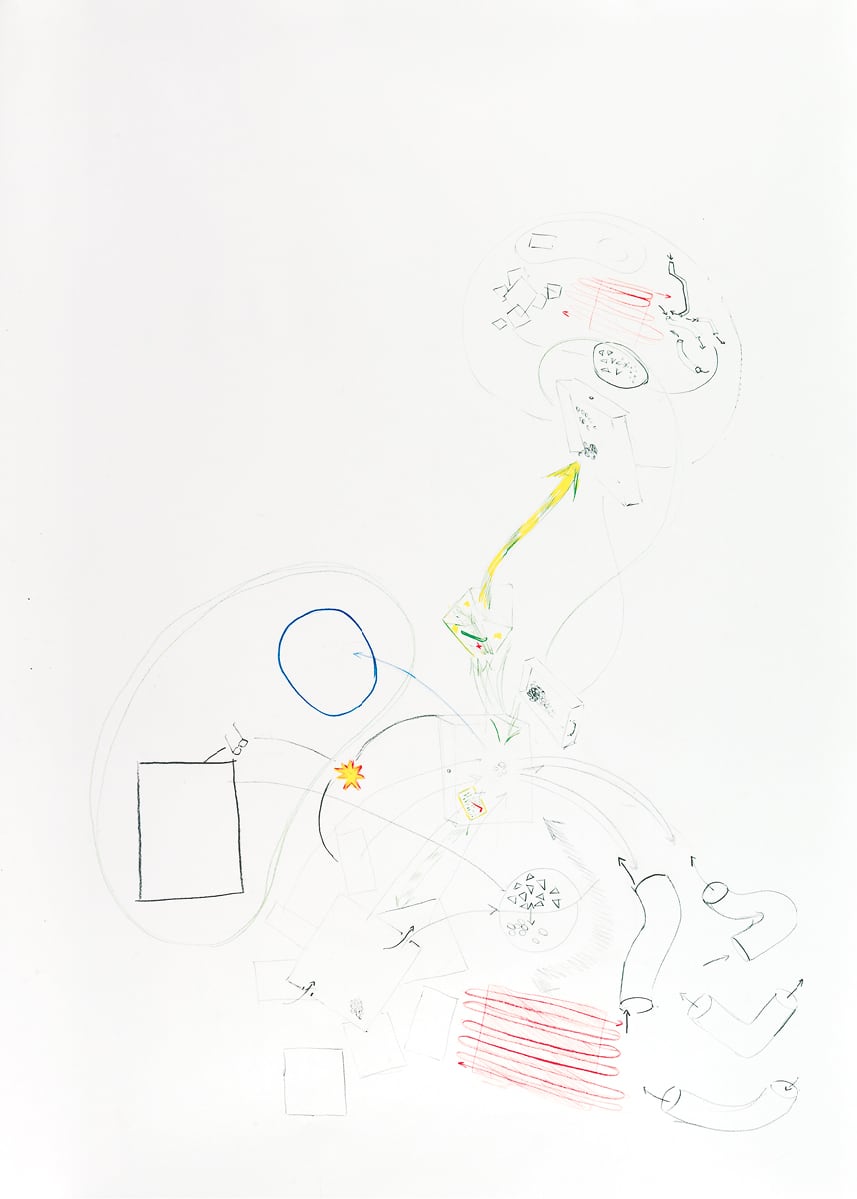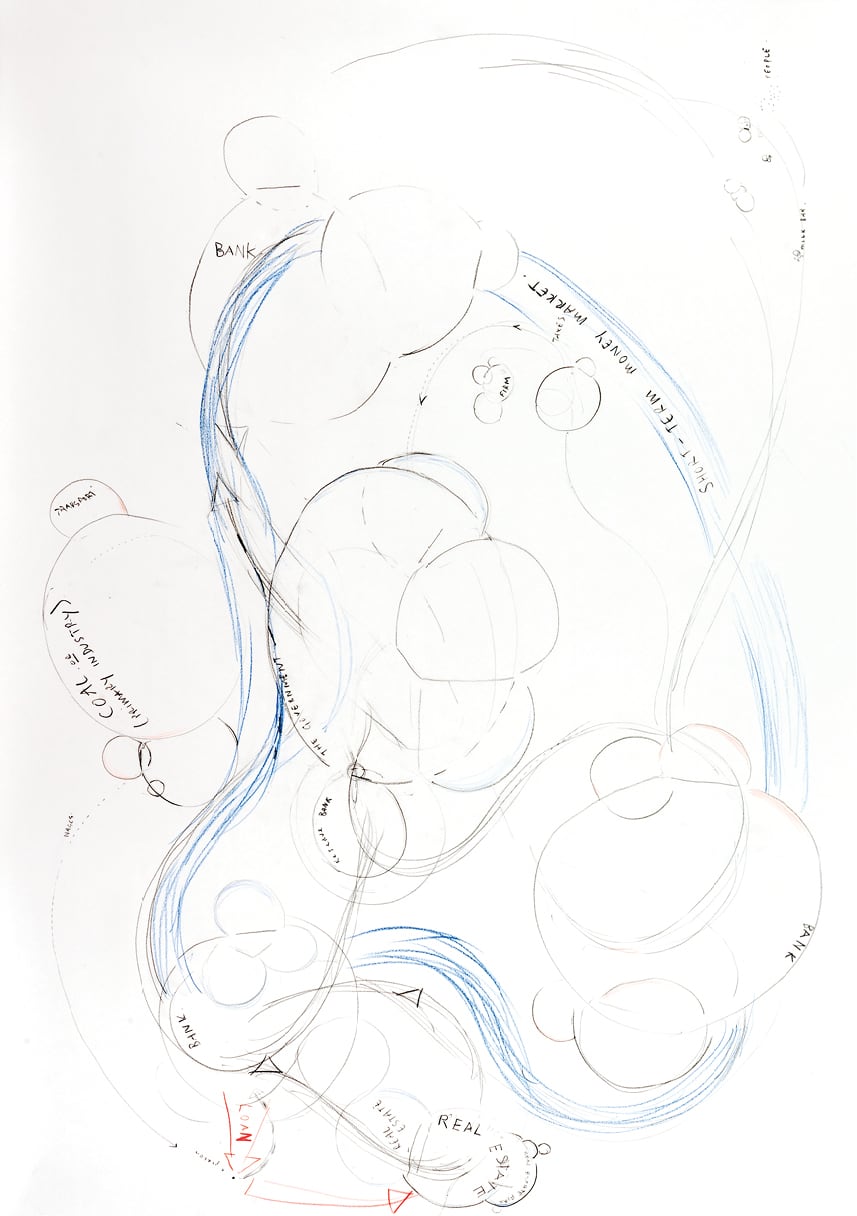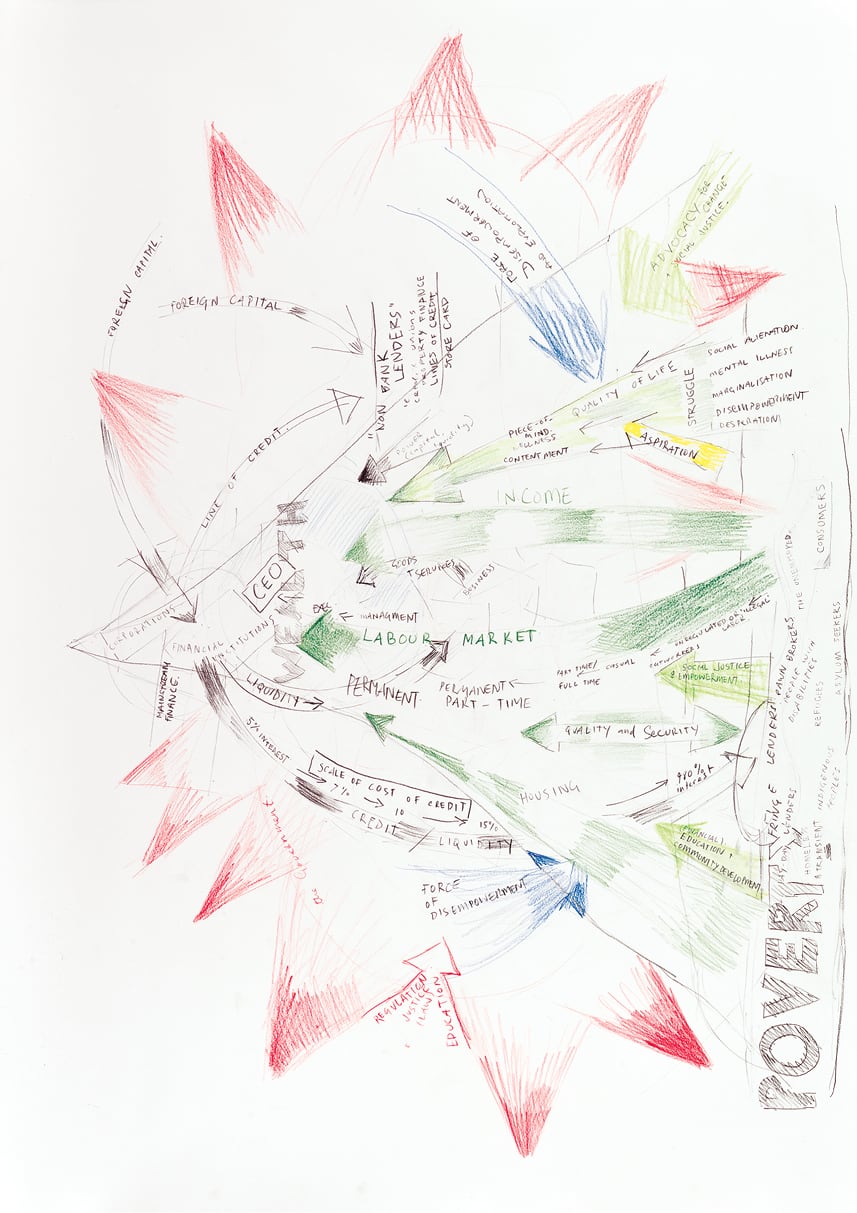the Double Coincidence Studies for an understanding of the economic system
I circulated an invitation asking for people with knowledge of economics to participate in a drawing project. My aim was to have a conversation with these people about their knowledge of the economic system and to document that conversation with a drawing.
Five people responded to the invitation and I arranged to meet with them.
We sat at a table together and talked about the economy and about the drawing project. I provided paper, pencils and an eraser.
It was difficult to find a place to start. ‘The Economy’ means different things to different people; economics is practiced in a variety of contexts, and is understood to apply to a range of situations.
As we talked, I made a drawing, attempting to represent the ideas that we discussed, consulting with the other person, and inviting them draw as well.
Each drawing is a document of a conversation. Each drawing was informed by the conversations and drawings that preceded it.
The drawings that are the result of the process outlined above, this text, and documentation of the meetings are exhibited together as the Double Coincidence.
Participants were (in order of meeting): Hunter Robertson, Mark Jeanes, Eza Al Zein, Conal Thwaite, and Garry Rothman. The drawings are displayed in this order.
— Andrew McQualter, August 2010
Andrew McQualter the Double Coincidence Studies for an understanding of the economic system Collaborative drawings. August 2010 – ongoing
